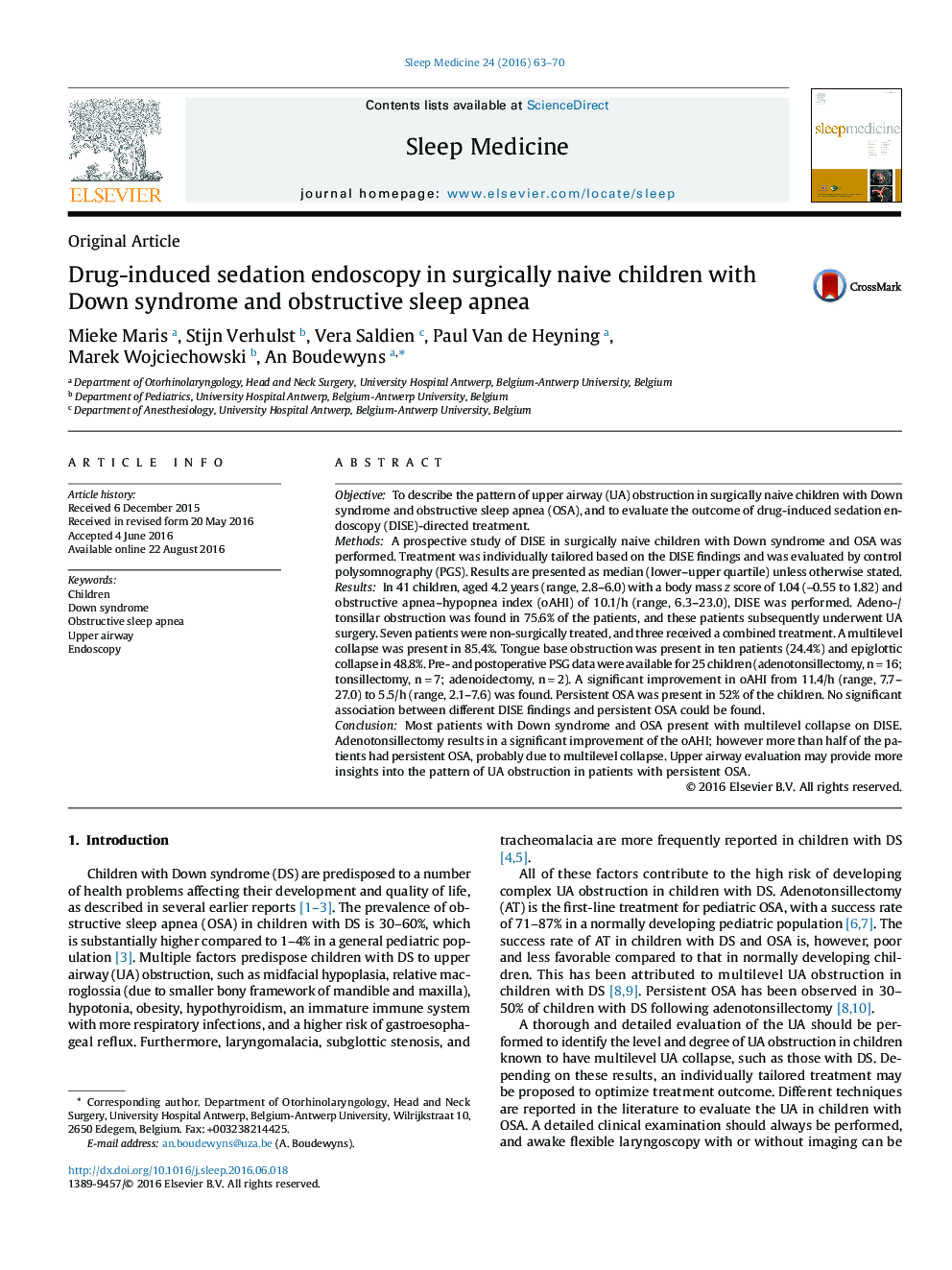| کد مقاله | کد نشریه | سال انتشار | مقاله انگلیسی | نسخه تمام متن |
|---|---|---|---|---|
| 6060043 | 1586484 | 2016 | 8 صفحه PDF | دانلود رایگان |

- Multilevel upper airway obstruction is common in Down syndrome (DS) children with obstructive sleep apnea (OSA).
- Adenotonsillectomy significantly improves the obstructive apnea-hypopnea index.
- More than 50% of DS children have residual OSA following adenotonsillectomy.
- Drug-induced sedation endoscopy may guide treatment in DS children with persistent OSA.
ObjectiveTo describe the pattern of upper airway (UA) obstruction in surgically naive children with Down syndrome and obstructive sleep apnea (OSA), and to evaluate the outcome of drug-induced sedation endoscopy (DISE)-directed treatment.MethodsA prospective study of DISE in surgically naive children with Down syndrome and OSA was performed. Treatment was individually tailored based on the DISE findings and was evaluated by control polysomnography (PGS). Results are presented as median (lower-upper quartile) unless otherwise stated.ResultsIn 41 children, aged 4.2 years (range, 2.8-6.0) with a body mass z score of 1.04 (â0.55 to 1.82) and obstructive apnea-hypopnea index (oAHI) of 10.1/h (range, 6.3-23.0), DISE was performed. Adeno-/tonsillar obstruction was found in 75.6% of the patients, and these patients subsequently underwent UA surgery. Seven patients were non-surgically treated, and three received a combined treatment. A multilevel collapse was present in 85.4%. Tongue base obstruction was present in ten patients (24.4%) and epiglottic collapse in 48.8%. Pre- and postoperative PSG data were available for 25 children (adenotonsillectomy, nâ=â16; tonsillectomy, nâ=â7; adenoidectomy, nâ=â2). A significant improvement in oAHI from 11.4/h (range, 7.7-27.0) to 5.5/h (range, 2.1-7.6) was found. Persistent OSA was present in 52% of the children. No significant association between different DISE findings and persistent OSA could be found.ConclusionMost patients with Down syndrome and OSA present with multilevel collapse on DISE. Adenotonsillectomy results in a significant improvement of the oAHI; however more than half of the patients had persistent OSA, probably due to multilevel collapse. Upper airway evaluation may provide more insights into the pattern of UA obstruction in patients with persistent OSA.
Journal: Sleep Medicine - Volume 24, August 2016, Pages 63-70